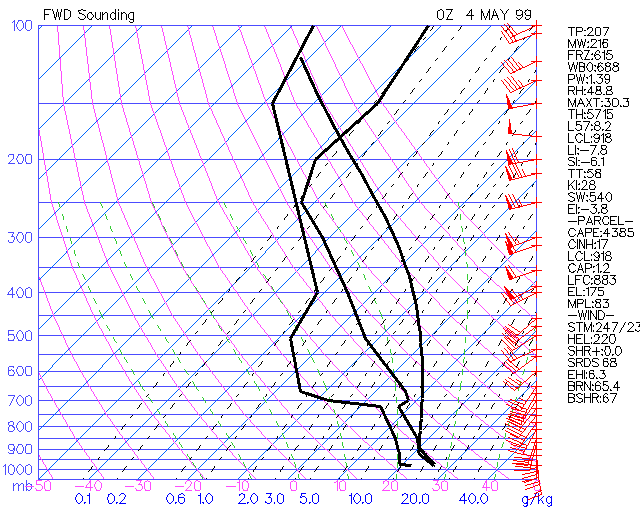
1. What is SRDS? Storm Relative Directional Shear (SRDS) is the directional change of wind that effects a storm between the surface and 3 kilometers. 2. How is SRDS determined? First, the storm speed and direction of movement is approximated. Next, the wind direction effecting the base of the storm is found. Then, the wind direction effecting the 3 kilometer level of the storm is found. Lastly, the amount of degree difference between the two directions is found. For example, a south wind effecting the base of a storm (180 degrees) and a west wind effecting the storm 3 kilometers up (270 degrees) results in a SRDS of 270 - 180 = 90 degrees. The sounding at the bottom has a SRDS of 68 degrees. 3. Operational significance of SRDS:
Tornadoes: Strong SRDS is important to produce a storm environment favorable for tornadoes. A low level turning of wind generates Helicity. WAA: A strong veering wind is associated with Warm Air Advection (WAA). 4. Pitfalls: a. Mesoscale influences can vary SRDS significantly.  |